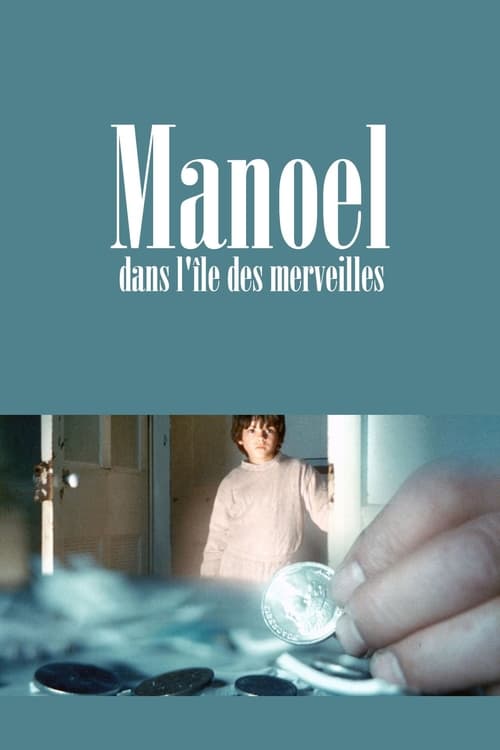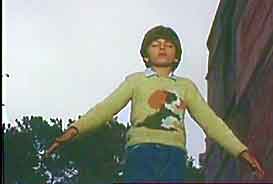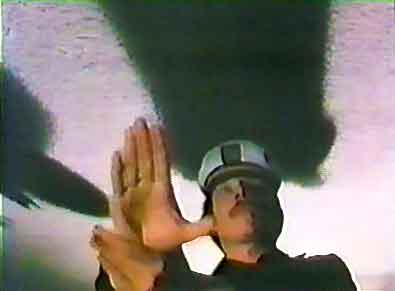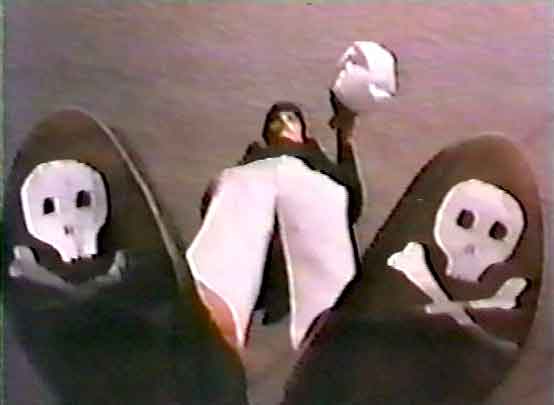 The early 1980s were a banner era for children’s movies made by iconoclastic filmmakers. Examples include POPEYE (1980) from Robert Altman, TUSK (1980) from Alejandro Jodorowsky, THE EMPEROR OF PERU/THE ODYSSEY OF THE PACIFIC (1982) from Fernando Arrabal, and the TV miniseries MANUEL ON THE ISLAND OF WONDERS/MANOEL DANS L’ILE DES MERVEILLES (1984) from Raúl Ruiz.
The early 1980s were a banner era for children’s movies made by iconoclastic filmmakers. Examples include POPEYE (1980) from Robert Altman, TUSK (1980) from Alejandro Jodorowsky, THE EMPEROR OF PERU/THE ODYSSEY OF THE PACIFIC (1982) from Fernando Arrabal, and the TV miniseries MANUEL ON THE ISLAND OF WONDERS/MANOEL DANS L’ILE DES MERVEILLES (1984) from Raúl Ruiz.
Precisely how kid-friendly those films were remains an open question. From the POPEYE song “Everything is Food” to the young boy in THE EMPEROR OF PERU longing to marry his mother, there are elements in each alerting us to the fact that their makers were all known primarily for grown-up fare. The enigmatic MANUEL ON THE ISLAND OF WONDERS, which exists as a feature (entitled LES DESTINS DE MANOEL/MANUEL’S DESTINIES), a four-part Portuguese series and a three-part French program, likewise seems less than childish in its orientation.
The enigmatic MANUEL ON THE ISLAND OF WONDERS, which exists as a feature (entitled LES DESTINS DE MANOEL/MANUEL’S DESTINIES), a four-part Portuguese series and a three-part French program, likewise seems less than childish in its orientation.
In this respect the series/film ranks with other Ruiz “children’s films” such as DORA AND THE MAGIC LANTERN/DORA ET LA LANTERNE MAGIQUE (1977; directed by Pascal Kané and co-scripted by Ruiz) and TREASURE ISLAND (1986). Ruiz was an intellectual who favored the nonlinear and deconstructionist, two attributes that figure quite prominently in MANUEL, which in its French miniseries form (the most common of the three versions) can be viewed as one third of a great work.
That’s to say that the series’ first episode is brilliant. It introduces us to seven year old Manuel (Ruben de Freitas), who lives on a scenic island with his distant parents. One day, following a break-in whose perpetrator makes off with his mother’s jewelry, Manuel decides to skip school and explore a cave. There he meets himself at age thirteen (Marco Paulo de Freitas), who tells the story of how he got to where his seven year old self now stands.
…the series’ first episode is brilliant
As it turns out, the older Manuel’s account, dramatized via lengthy flashbacks, is identical to that of the younger Manuel, but diverges when he reaches the cave. There resides an ancient fisherman (and his Wookie-like mutant son), who inducts both Manuels into a time-tripping drama that continually circles back to the break-in of the previous night, and ends, unfortunately, in death.
 Enchanting and confounding in equal measure, the episode evinces influences that include Borges, Lewis Carroll, Luis Bunuel and the Brothers Grimm. The tone is whimsical and light-hearted, with the time travel angle imparting a very Ruizian rumination on past, present and how they intersect. There’s also, in a definite contrast to Ruiz’s usual fare, a strong narrative, bequeathed by ever-present voice-over narration. That’s a questionable device, but here it works given the child-centered subject matter; a children’s story, in other words, is exactly what this episode is, and such stories originate in the oral format.
Enchanting and confounding in equal measure, the episode evinces influences that include Borges, Lewis Carroll, Luis Bunuel and the Brothers Grimm. The tone is whimsical and light-hearted, with the time travel angle imparting a very Ruizian rumination on past, present and how they intersect. There’s also, in a definite contrast to Ruiz’s usual fare, a strong narrative, bequeathed by ever-present voice-over narration. That’s a questionable device, but here it works given the child-centered subject matter; a children’s story, in other words, is exactly what this episode is, and such stories originate in the oral format.
In MANUEL’S second episode, alas, things go a bit awry. It’s no secret that Ruiz, one of the most prolific filmmakers of his generation (MANUEL was but one of five Ruiz credits, which included three features and a two-part docuseries, from 1984), tended to lose interest midway through the filming of his productions, and that appears to have been the case here. The episode begins in riveting fashion, with Manuel and his classmates led to a secluded forest and guided in a collective dream by their teacher, who seeks to have them dream a hospital into being.
It’s no secret that Ruiz, one of the most prolific filmmakers of his generation…
Manuel fails to properly synch with his dreaming classmates, and winds up meeting an odd man looking to get wine from a tree trunk. This fellow may in fact be Manuel in the future, and gets the boy to switch places with him, leaving Manuel to navigate the world in a grown-up body. It’s at this point that Ruiz’s trademarked self-indulgence kicks in, with odd camera angles and pretty sunsets taking prominence amid a narrative that grows increasingly difficult to follow (the narration that dominated the first episode is pared down considerably), with ghosts, a new set of parental guardians and a little girl chess prodigy complicating things. The idea may have been for the dream that begins the episode to inform the remainder of it, or maybe not.
 Whatever Ruiz’s intent—according to THE CINEMA OF RAUL RUIZ author Michael Goddard, the film/series “becomes increasingly detached from a direct relation to any linear story, even a multiple one, and becomes an exploration of the powers of cinematic images themselves”—in episode three he furthers the nonlinearity. It is, in fact, downright incoherent, introducing a sailor who may or may not be one of the grown-up characters introduced in the previous episodes. This personage comes to dominate the episode, particularly in an interminable scene in which he, Manuel and his friends create shadow shows on a wall with expressive hand gestures.
Whatever Ruiz’s intent—according to THE CINEMA OF RAUL RUIZ author Michael Goddard, the film/series “becomes increasingly detached from a direct relation to any linear story, even a multiple one, and becomes an exploration of the powers of cinematic images themselves”—in episode three he furthers the nonlinearity. It is, in fact, downright incoherent, introducing a sailor who may or may not be one of the grown-up characters introduced in the previous episodes. This personage comes to dominate the episode, particularly in an interminable scene in which he, Manuel and his friends create shadow shows on a wall with expressive hand gestures.
…becomes an exploration of the powers of cinematic images themselves”…
Ambiguity was a crucial component of Ruiz’s films, particularly those he made in France (with MANUEL being a French-Portuguese co-production). There he was initially welcomed via a claim the then-chair of France’s INC (Institut national de l’audiovisuel) made about Ruiz’s 1978 film THE SUSPENDED VACATION/LA VOCATION SUSPENDUE: “It’s wonderful because no-one will get it.” That’s a judgement Ruiz evidently took to heart, particularly when making MANUEL ON THE ISLAND OF WONDERS.

